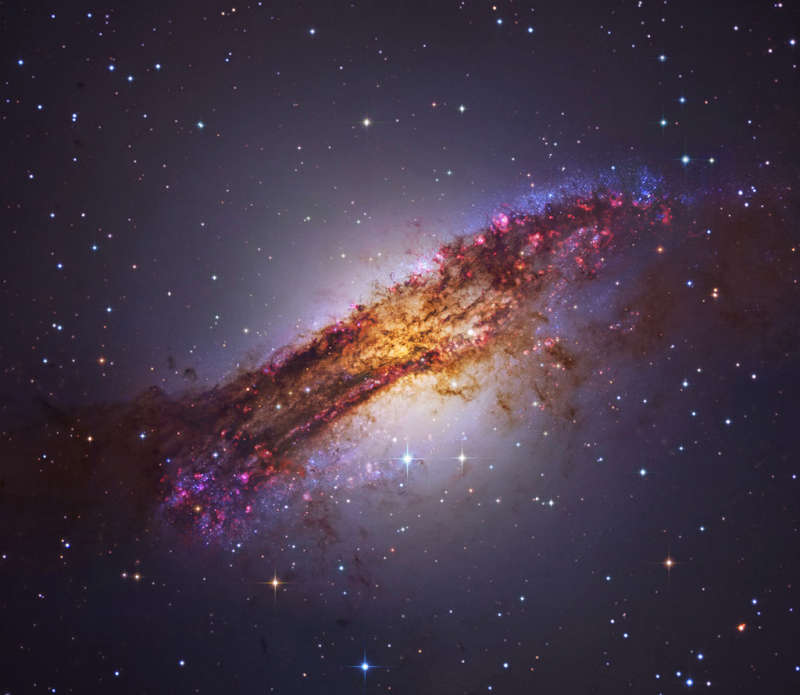Credit & Copyright:
Processing & Copyright: Robert Gendler, Roberto Colombari
Image Data: Hubble Space Telescope, European Southern Observatory
Explanation:
What's the closest active galaxy to
planet Earth?
That would be Centaurus A, only 11 million light-years distant.
Spanning over 60,000 light-years, the peculiar elliptical galaxy is
also
known as NGC 5128.
Forged in a
collision of two
otherwise normal galaxies, Centaurus A's
fantastic jumble of young blue star clusters, pinkish star forming
regions, and imposing dark dust lanes are seen here in remarkable detail.
The
colorful galaxy portrait is a composite of image data
from space- and ground-based telescopes large and small.
Near
the galaxy's center, left over cosmic debris is steadily
being consumed by a central black hole with a billion times
the mass of the Sun.
As
in other active galaxies, that process generates the radio,
X-ray, and gamma-ray energy radiated by Centaurus A.
Processing & Copyright: Robert Gendler, Roberto Colombari
Image Data: Hubble Space Telescope, European Southern Observatory
1999 2000 2001 2002 2003 2004 2005 2006 2007 2008 2009 2010 2011 2012 2013 2014 2015 2016 2017 2018 2019 2020 2021 2022 2023 2024 2025 |
Yanvar' Fevral' Mart Aprel' Mai Iyun' Iyul' Avgust Sentyabr' Oktyabr' Noyabr' Dekabr' |
NASA Web Site Statements, Warnings, and Disclaimers
NASA Official: Jay Norris. Specific rights apply.
A service of: LHEA at NASA / GSFC
& Michigan Tech. U.
|
Publikacii s klyuchevymi slovami:
Centaurus A - Centavr A
Publikacii so slovami: Centaurus A - Centavr A | |
Sm. takzhe:
Vse publikacii na tu zhe temu >> | |
